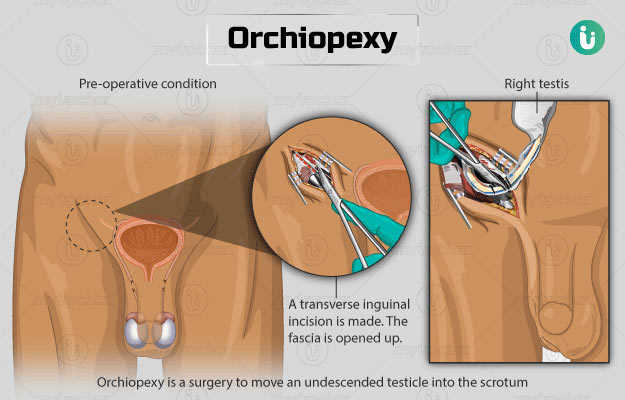Summary
Orchiopexy is a surgical procedure that is done to place an undescended testicle inside the scrotum. Normally, the testicles of a baby move down into the scrotum at the end of a pregnancy. However, if they don’t, even six months after birth, an orchiopexy is performed. The surgery will prevent the risks of infertility, testicular cancer, or hernia in the future.
Before the procedure, the doctor will check your child and order a few diagnostic tests like ultrasound or blood/urine test. Your son will need to fast starting from midnight before the surgery. You will have to sign a consent form to permit your child’s operation. The procedure will be done under general anaesthesia and may take about an hour. If your child has no other health issues, he may be allowed to go home on the same day of the surgery. Wearing loose trousers and underwear may help reduce his discomfort.






































